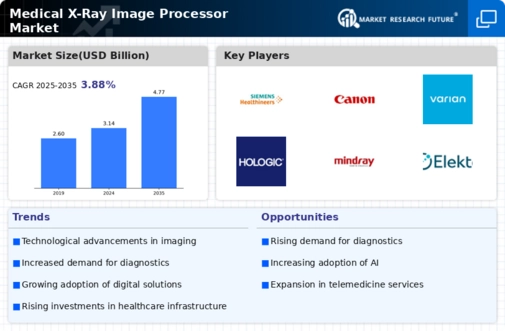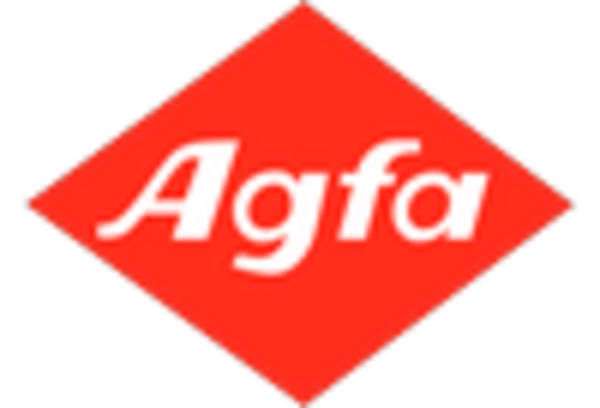Growing Geriatric Population
The aging population is a critical factor influencing the Medical X-Ray Image Processor Market. As individuals age, they often experience a higher incidence of health issues that require diagnostic imaging. The World Health Organization projects that the number of people aged 60 years and older will double by 2050, leading to increased healthcare demands. This demographic shift is likely to drive the need for more sophisticated x-ray imaging solutions, as older adults typically require more frequent medical evaluations. Consequently, the Medical X-Ray Image Processor Market is poised for growth as healthcare providers adapt to the needs of an aging population.
Increased Healthcare Expenditure
Rising healthcare expenditure is a notable driver for the Medical X-Ray Image Processor Market. Governments and private sectors are investing more in healthcare infrastructure, which includes advanced imaging technologies. This increase in funding allows for the procurement of state-of-the-art x-ray processors that enhance diagnostic capabilities. According to recent reports, healthcare spending is projected to continue its upward trend, which may lead to greater adoption of advanced imaging solutions. As healthcare facilities upgrade their equipment to meet modern standards, the Medical X-Ray Image Processor Market is likely to benefit from this influx of investment.
Rising Incidence of Chronic Diseases
The prevalence of chronic diseases is on the rise, which is a significant driver for the Medical X-Ray Image Processor Market. Conditions such as cardiovascular diseases, cancer, and musculoskeletal disorders necessitate frequent imaging for diagnosis and monitoring. According to recent statistics, the incidence of these diseases is expected to increase, thereby amplifying the need for efficient imaging solutions. As healthcare systems strive to provide timely and accurate diagnoses, the demand for advanced x-ray imaging technologies is likely to grow. This trend suggests a sustained expansion of the Medical X-Ray Image Processor Market as healthcare providers invest in state-of-the-art imaging equipment.
Technological Advancements in Imaging Techniques
The Medical X-Ray Image Processor Market is experiencing a surge in technological advancements that enhance imaging techniques. Innovations such as digital radiography and computed radiography are becoming increasingly prevalent, allowing for higher resolution images and faster processing times. These advancements not only improve diagnostic accuracy but also streamline workflow in medical facilities. The integration of advanced software solutions enables radiologists to analyze images more effectively, potentially leading to better patient outcomes. As healthcare providers seek to adopt the latest technologies, the demand for sophisticated image processors is likely to rise, indicating a robust growth trajectory for the Medical X-Ray Image Processor Market.
Regulatory Support for Advanced Imaging Technologies
Regulatory bodies are increasingly supporting the development and adoption of advanced imaging technologies, which serves as a driver for the Medical X-Ray Image Processor Market. Initiatives aimed at improving diagnostic accuracy and patient safety are encouraging manufacturers to innovate. Regulatory approvals for new imaging devices and software solutions are becoming more streamlined, facilitating quicker market entry. This supportive environment may lead to a proliferation of advanced x-ray imaging products, thereby enhancing competition and driving down costs. As a result, the Medical X-Ray Image Processor Market is expected to experience growth as new technologies become available to healthcare providers.


















Leave a Comment